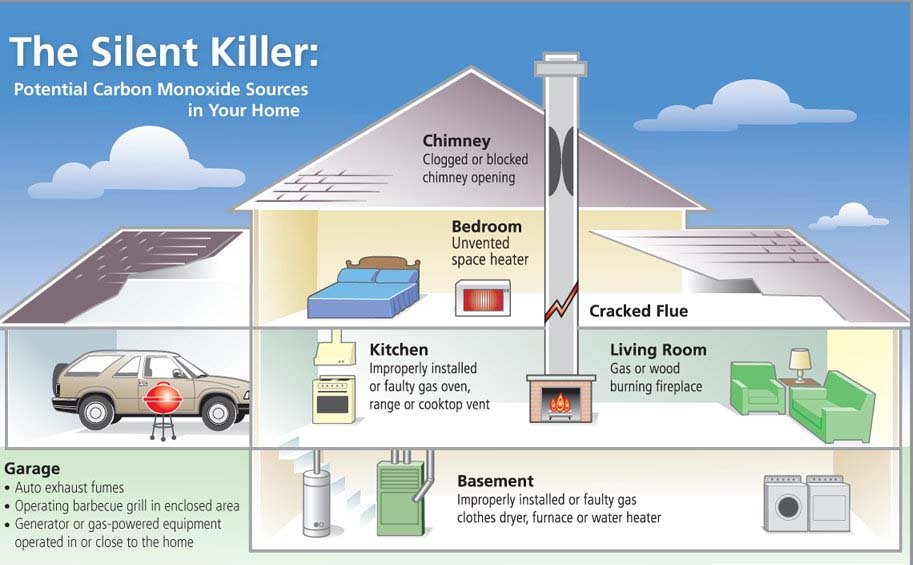Carbon Monoxide Detector Service
Carbon monoxide detectors are crucial for safeguarding your home against this silent killer, and they should be checked and serviced at least once a year to ensure they’re functioning properly.
Carbon Monoxide is a tasteless, odorless gas that is impossible to detect without a monitoring device. It is produced in many ways with the most common way being fuel combustion during heating and cooking. Combustion engines like those are found in automobiles, snow throwers and lawnmowers, which create carbon monoxide while in use. Blocked chimneys, flues or a damaged furnace can also allow carbon monoxide gases to enter the home.This colorless odorless gas is a byproduct of gas appliances throughout your home. This gas is very potent and if not monitored can leave to sickness or even death. One CO detector should be on every level of your home.
The most common Carbon Monoxide detectors plug into your wall and have a battery backup. Interconnected units interface right into your already existing system, making your home even more safe.
Just like smoke detectors, you should have a CO detector on every level of your home. Interconnected units are optimal for alerting the entire household.
Know the Facts
Only half of US homes have a working carbon monoxide alarm.
75% of homes have a potential source of carbon monoxide. (heater, stove, generator, etc.)
72,000 carbon monoxide incidents occur each year in the US.
Kidde offers the first CO alarm proven to last 10 years - twice the life as other models!
Potential Sources of CO Poisoning
This system fills the gap between older homes and newer homes. It uses wireless key features that integrate your own homes smoke detector system and expands onto that. Most newer homes are up to code with the new fire standards. But if your home does not have smoke alarms in certain areas, you are maybe at risk. Smoke detectors are placed in certain locations for a reason.
Car left running in attached garage
Portable generators
Corroded or disconnected water heater vent pipe
Portable kerosene or gas heaters
Loose or broken vent pipes
Improperly installed kitchen range or vent
Opening a grill indoors or in a garage
Gas or wood-burning fireplace
Just like smoke detectors, you should have a CO detector on every level of your home.
Interconnected units are optimal for alerting the entire household.
Do you have your original smoke/CO detectors?
Is your house missing a CO detector?
Do you know someone who needs an updated smoke/CO detector system?
Do you have alarms chirping at night?
Are your alarms more than 10 years old?
Have very tall ceilings? Can’t reach your smoke/CO detectors?



